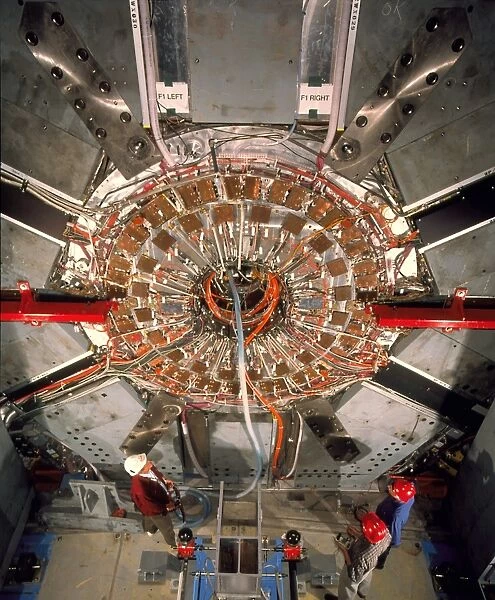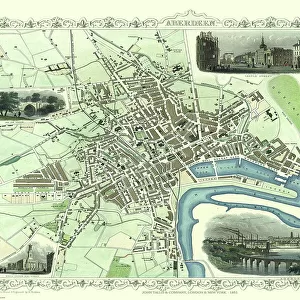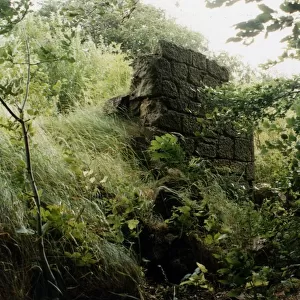Home > Popular Themes > Physicists
Physicists work on BaBar detector at SLAC
![]()

Wall Art and Photo Gifts from Science Photo Library
Physicists work on BaBar detector at SLAC
BaBar particle detector. Physicists and engineers working on the open BaBar particle detector at the Stanford Linear Accelerator Center (SLAC), California, USA. It is hoped that BaBar will help explain why there is more matter than antimatter in the universe. BaBar will detect the B mesons and their antimatter equivalents, anti-B mesons, that result from the collisions of electrons and positrons circulated in opposite directions around the two rings of the PEP-II collider. The collisions will occur at the centre of this cylindrical device. To explain the greater amount of matter in the universe, B mesons should decay at a different rate from anti-B mesons
Science Photo Library features Science and Medical images including photos and illustrations
Media ID 6273127
© DAVID PARKER/SCIENCE PHOTO LIBRARY
California Center Centre Construction Detector Detectors Engineer Particle Detector Particle Physics Laboratory Physicist Slac Stanford Linear Accelerator Us A Babar
EDITORS COMMENTS
In this photo print, physicists and engineers are seen diligently working on the open BaBar particle detector at the Stanford Linear Accelerator Center (SLAC) in California, USA. This state-of-the-art device holds immense promise in unraveling one of the greatest mysteries of our universe - why there is an abundance of matter compared to antimatter. BaBar's primary objective is to detect B mesons and their antimatter counterparts, anti-B mesons. These particles are produced when electrons and positrons collide within the PEP-II collider's two rings, which run in opposite directions. The collisions take place at the heart of this cylindrical marvel. The construction process captured here showcases a collective effort by researchers and engineers who tirelessly strive to understand the fundamental workings of our cosmos. By studying how B mesons decay relative to anti-B mesons, scientists hope to shed light on why matter dominates over antimatter in our universe. This remarkable image serves as a testament to human curiosity and ingenuity as we push the boundaries of particle physics research. It reminds us that behind every groundbreaking discovery lies countless hours spent meticulously constructing intricate detectors like BaBar. Science Photo Library has once again provided us with a glimpse into humanity's relentless pursuit of knowledge through this extraordinary snapshot from SLAC's cutting-edge facility.
MADE IN AUSTRALIA
Safe Shipping with 30 Day Money Back Guarantee
FREE PERSONALISATION*
We are proud to offer a range of customisation features including Personalised Captions, Color Filters and Picture Zoom Tools
SECURE PAYMENTS
We happily accept a wide range of payment options so you can pay for the things you need in the way that is most convenient for you
* Options may vary by product and licensing agreement. Zoomed Pictures can be adjusted in the Cart.




